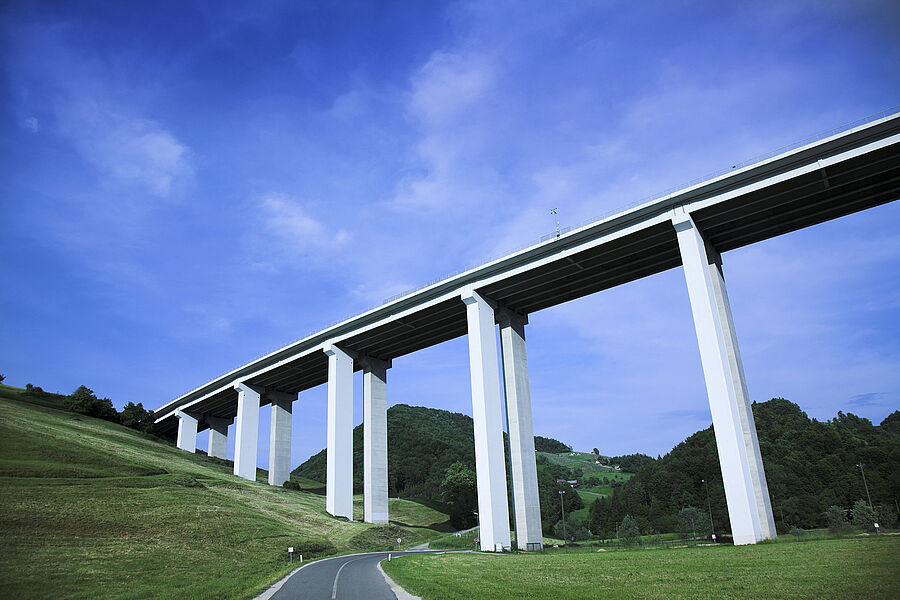Combination of excitation, measurement and evaluation methods to determine dynamic parameters of railroad bridges
The determination of dynamic properties of railway bridges is important for the assessment of structures of high-speed train lines, to show for example their structures’ suitability for changing operating conditions like new train types or changes to higher train speeds.
Beside determination of natural frequencies and mode shapes the identification of damping and its non-linear behaviour can be necessary to fulfil the criterium of limited ballast acceleration (derailing). The evaluation of bridge damping of real structure is a particularly challenging task when dealing with stiff structures (e.g. frame bridges with short spans) using conventional methods like ambient vibration monitoring or impact testing after train crossing. Also, the results of measurements conducted by different operating measurement teams/contractors may differ due to different methods used during evaluation of the data.
The project KOMET (funded by the Austrian Federal Railways – Division ÖBB-Infrastructure AG) carried out by the engineering company REVOTEC, AIT and the Technical University of Vienna aimed at demonstrating the potential and the benefits of assessing dynamic parameters and their non-linear behaviour using forced excitation. Another focus of the project was to improve the comparability of measurements to define a guideline for different contractors.
The project results were based on erected short to medium span railway bridges, most of them frame bridges. By comparing results using different methods of forced excitation (sandbag, impulse hammer, different size of exciters [small Long stroke Shaker Fdyn=0,5 kN up to our Mobile Seismic Simulator Fdyn=25 kN]) the advantages and applicability of the individual methods were shown and a new method of determination for bridge damping was proposed. In addition, a new proposal for the damping of frame bridges was made. The project results were used for the new guidelines ÖBB RL 8.01.04 and 8.01.05- Bridge dynamic analysis and measurement of high-speed railway bridges.




